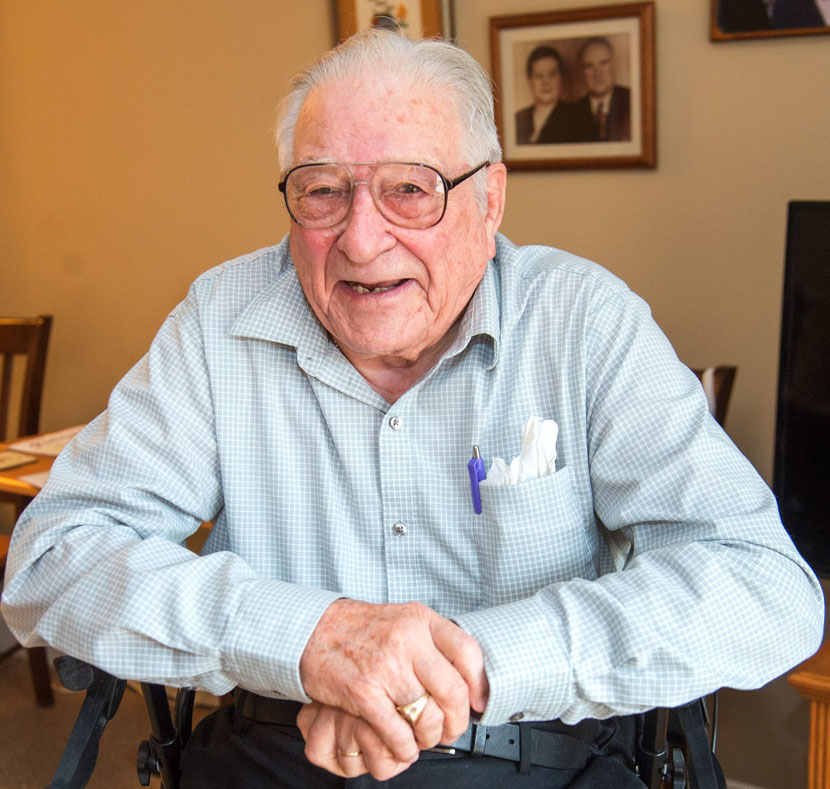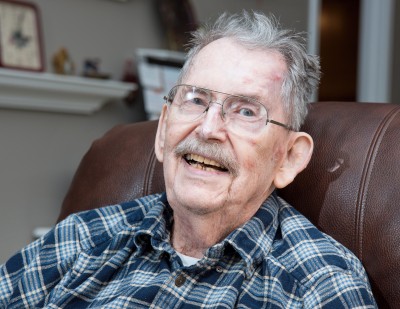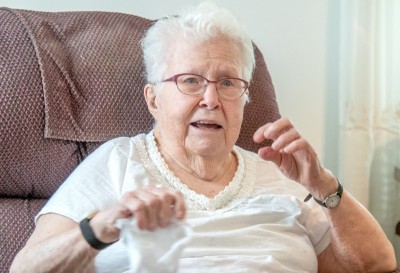Claude Coombs
By Paul Wood

Photo By Robin Scholz/The News-Gazette
SAVOY — At Chanute Field, Claude Coombs trained air and ground crews in the new “secret weapon” — radar.
He was the antenna expert, and he spent more than three years in the Army Signal Corps attached to an aviation unit, leaving as a staff sergeant.
At one point, he thought he was bound for the European theater, but never shipped out — for which he is thankful, yet regretful.
One reason the 94-year-old is thankful: He would never have met future wife Lou if he hadn’t been assigned to a base near where he lived.
But he downplays his service as “dull,” despite the antennas expert’s vital role in keeping those in the U.S. one step ahead of the Germans and Japanese in vital technology.
In 1941, Coombs was a student at Western Kentucky University and was also a member of the basketball team and baseball teams there.
He was a pretty good baseball player.
Basketball? Not so much, he says.
“I was a ‘splinter-picker’ warming the bench,” the former forward says. The Hilltoppers had plenty of good players then: E.A. Diddle became the first coach in history to lead 1,000 games at one school.
And Coombs is equally humble about his academic career, spent preparing to be a teacher.
“I majored in girls,” he says.
When Pearl Harbor was bombed, he left college short of graduation and enlisted in the Army early the next year.
“I made my mind up right away. I badly wanted to be in the fight, against the Germans, or the Japanese or anybody else, whoever we had to,” he says.
Instead of carrying a rifle, he began a course in advanced electronics, completing many months of it before he was finally sent to basic training.
He moved from base to base, and on Sept. 22, 1942, he met Lula Mercer in Owensboro, Ky.
He says he ran into a buddy from school and they were out for the night, “chasing girls again.”
She worked in a radio vacuum tube factory, was getting off her shift and about to have a midnight meal with her friends.
Coombs spotted her in a back booth.
“See that girl back there? I’m going to marry her,” he told his friend.
The friend asked if he knew her, and he replied in the negative.
Six weeks later, they were married. They had two children before Lou passed away in 2014.
At a base in Boca Raton, Fla., Coombs learned that his unit was being divided into two groups.
“We got our shots for overseas,” he says. “We found out one group was going to the Pacific Theater. We figured we were going to Europe.”
At 6 a.m. the next day, a sergeant came in and bellowed for the soldiers to get off their butts.
Destination Normandy?
Nope. Rantoul.
“Once you volunteer for the service, you never volunteer again,” Coombs says.
He remembers Chanute as “very busy,” with many training programs three months or less, and troops coming in constantly, often from Camp McCoy in Wisconsin.
More than 250 African-American enlisted men were trained at Chanute, the core of other black squadrons like the famous Tuskegee Airmen, but Coombs never encountered them.
“It was always changing,” he says.
Radar training included transmitting and receiving signals, then state-of-the-art technology.
Since he was on staff, Coombs didn’t have to return to barracks every night, and he was able to come home to his wife in a one-bedroom apartment at 910 S. First St., C.
After the war, the Coombses stayed there another five years, raising their first child in cramped quarters.
His landlord started him in the paint business, and that’s where he stayed his entire career.
“I never applied for a job in my life,” he says.
His wife was an interior decorator and bookkeeper for the M.A.B. Paint Company for many years.
Do you know a veteran who could share a story about military service? Contact staff writer Paul Wood at pwood@news-gazette.com.
Read more stories from local veterans:
 Fred McCauley
CHAMPAIGN — In September 1952, recent MIT graduate Fred McCauley came to Korea to serve as a forward observer for a mort …
Fred McCauley
CHAMPAIGN — In September 1952, recent MIT graduate Fred McCauley came to Korea to serve as a forward observer for a mort …
 Frances Schneider
CHAMPAIGN — Not everybody who helps the U.S. cause in war wears a uniform. Frances Schneider was a civilian instructor i …
Frances Schneider
CHAMPAIGN — Not everybody who helps the U.S. cause in war wears a uniform. Frances Schneider was a civilian instructor i …
 Meg Miner
MANSFIELD — Meg Miner served during the Persian Gulf War, but she later had some doubts about her country’s actions. The …
Meg Miner
MANSFIELD — Meg Miner served during the Persian Gulf War, but she later had some doubts about her country’s actions. The …